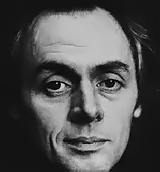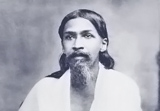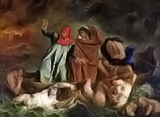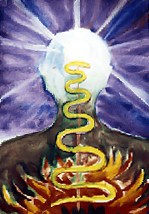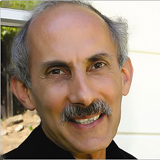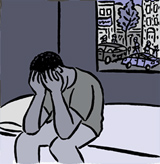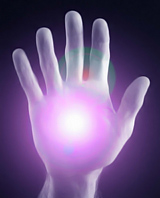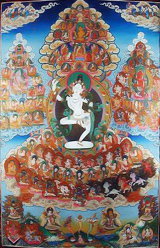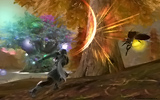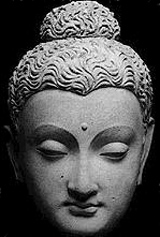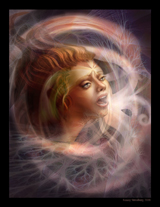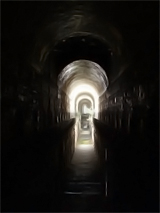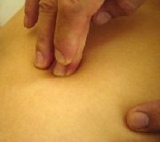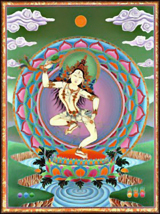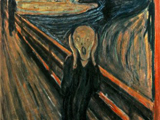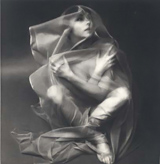Alchemy of the soul
Bridging spiritual practice and psychotherapy
Editor's note
This is the fourth article of the series 'Alchemy of the soul'. This chapter deals with situations in which the therapist has to leave the normal paradigms of psychotherapy for admitting the 'soul'. The guidelines that can help include a drastic shift for the therapist also. Through living examples, the author continues his exposition.
“True sanity entails in one way or another the dissolution of the normal ego, that false self competently adjusted to our alienated social reality: the emergence of the ‘inner’ archetypal mediators of divine power, and through this death a rebirth, and the eventual re-establishment of a new kind of ego functioning, the ego now being the servant of the Divine, no longer its betrayer (1).”
In sharp contrast to Western psychiatry, R.D. Laing’s visionary perspective reflects Sri Aurobindo’s mapping of the journey from ego to soul. Pioneers of an evolving consciousness, they both recognize that spiritual experience is intrinsic to our psyche and can be accelerated through spiritual practice, psychotherapy or even through psychosis. Laing, whose psychiatric work focused on schizophrenia, identified the plight of humanity with its preoccupation with control of the external world, thus eclipsing the inner world — “...the realities of imagination, dreams, fantasies, trances, the realities of contemplative and meditative states..(2).”
When the ego, the instrument for surviving in the external world, is fractured or destroyed, the person is suddenly exposed to the inner world. Modern psychiatry categorizes the experiences of this inner world as pathological, thus fatally ignoring the transcendental experience of both the mystic and the madman. Laing envisions the task of the psychiatrist/therapist
“...to educt the person from this world [external] and induct him to the other [inner]. To guide him in it, and to lead him back again (3).”
Like Ken Wilbur, he challenges the traditional role of the therapist, envisioning a guide bearing resemblance to a shaman — one who possesses experiential knowledge of the inner terrain and the power to traverse it.
Although Laing’s focus is on ‘psychotic’ episodes, a transit may also occur through spiritual practice or psychotherapy.
“When a person goes mad, a profound transposition of his position in relation to all domains of being occurs. His center of experi ence moves from ego to Self (4).”
This movement, however, is a process in which ego and Self, natural and super natural, are often muddled. Whether we label the event ‘psychosis’, ‘spiritual practice’ or ‘psychotherapy’, crisis is present—death and rebirth are the common features. In the passage from the outer personality to the inner being, Sri Aurobindo describes an intermediate zone where the traveler is confused by conflicting claims of the inner and outer worlds. Experiences in this realm of psyche bear a strong resemblance to ‘psychosis’,
“…this intermediate zone is a region of half-truths — .... The sadhak thinks that he is no longer in the old small consciousness at all, because he feels in contact with something larger or more powerful, and yet the old consciousness is still there, not really abolished. He feels the control or influence of some Power, Being or Force greater than himself, aspires to be its instrument and thinks he has got rid of ego; but this delusion of egolessness often covers an exaggerated ego (5).”
Both the person believing that he is Jesus Christ and the spiritual aspirant may wander for a long time in this treacherous zone of consciousness; some never emerge.
The triggers for initiation into this passage are numerous. Entry into inner worlds may even occur spontaneously. Our main focus in this chapter is on the use of skillful means to bridge psychotherapy and spiritual practice.
Spontaneous openings
Extreme mental, emotional and physical phenomena that disrupt normal ego functioning and cause crises play a role in the evolution of consciousness. These altered states of consciousness like visions of goddesses and demons; extreme heat in the spine accompanied by uncontrollable bodily movements; awareness of spiritual guides or inhabitants of the underworld; oneness with the entire universe and near-death experiences, can be evoked by intense spiritual practice, psychedelics or by the psychotherapeutic process. Others occur spontaneously without invitation demonstrating that the evolutionary pressure of consciousness overrides all personal wishes.Bob, a jazz musician in his mid-sixties, consulted me about a singular change in his consciousness. Recently retired from a teaching career, he looked forward to playing music and tennis when, during a period of intense piano practice, the change occurred. He began to suffer physical symptoms of extreme pressure and heat in his head, symptoms relieved only by staring into space and focusing his eyes towards the crown of his head. Eventually, he identified with a single point in a vast energy field; a point of profound peace and awareness. His personality had become inconsequential.
Eventually, however, he became terrified: would he be able to return from that vast energy field? This fear, a fear of losing his mind, existed in tandem with his difficulty in re-establishing a relationship with the ordinary world. A seasoned musician, he was losing his ability to perform. Lapses also occurred on the tennis-court in the midst of returning a ball. Beckoned by the ‘other consciousness’, his capacity for intimate relationship became severely limited, presenting a major challenge to his life-partner. Was there an ‘organic’ explan-ation for this bizarre phenomenon? Should he take medication?
My approach to working with Bob was process-oriented. I consistently supported each experience, whether based on fear or an emerging ‘other consciousness’. His process did not demand the normal psycho-therapeutic effort to uncover and amplify feelings, images, bodily symptoms. It demanded coping strategies, as well as creative ways to ground this new and overwhelming energy.
Bob underwent standard neurological tests, receiving a clean bill of physical health. I did not recognize any mental or emotional pathology. What I did recognize were very strong signals of kundalini energy — extreme heat, pressure in the head, inner sounds of cicadas, eyes rolling upward and converging on a point above the crown center (single-sight). Above all, Bob’s entry into the ‘other consciousness’ endowed him with both a greater awareness and a deeper sense of peace: he was able to witness in minute detail the various parts of his personality — though illuminating, this process also evoked emotional pain and depression.
As I followed his process, I introduced Bob to the writings of Sri Aurobindo and Ken Wilbur. Receiving immense clarity from these ‘giants’, he has begun to explore his spirituality. Resonance with the experiences of others has slowly softened negative judgement of his own experience: he no longer thinks of it as an aberration.
Bob’s greatest challenge was to build a bridge between two worlds of radically different consciousnesses. He discovered that in avoiding his inner world, he inflicted upon himself both physical and psychological pain. Gradually, regularly, he began to ‘sit and stare’ — his own creative form of meditation. Physical work, tennis and bodywork helped him to stay in his body and relate to the ordinary world.
Bob’s journey is a work in progress. For six years, he has experienced a steadily increasing consciousness. This has significantly accelerated his personal psychological work, while simultaneously affording him direct access to his spiritual reality. His experience is a testimony to the evolutionary pressure of consciousness — a consciousness which transcends all personal designs and efforts.
The spiritual door
Passage from the ego to the inner being can be opened through the discipline of either spiritual practice or psychotherapy. Although these disciplines have differing goals, some of their methods overlap and can be mutually beneficial. However, both practices possess an inability and a resistance to work with emerging ‘psychological’ and ‘spiritual’ material. Intensive meditation can produce psychosis; psychotherapy can release kundalini. In either case a helper or guide is important. In the spiritual context, a teacher is necessary. In a psychological framework, the therapist takes on a new role — that of an integral guide. This guide must undergo extensive training in psychotherapy and spiritual practice in order to bridge the personal and transpersonal. The integral guide must possess a knowledge of the body, mind, life-force and spiritual realms in order to follow and support the traveler’s process in both outer and inner worlds. In order to expedite a particular journey, he or she may collaborate with other guides possessing such specialized training as shamanism.The journey inward is unique to each traveler. For the spiritual practitioner, it may begin by following the breath, or by visualization in order to focus and eventually quiet the mind. Initially, one might experience a state of harmony and peace. However, this state is only the beginning of a long and sometimes perilous passage. Jack Kornfield, a teacher of Buddhist meditation, discriminates between two levels of spiritual practice:
“One begins with virtue and concentration and calming and a softening of the body and an opening of the heart.... But then when we are ready to go deeper, it means to open the whole of the inner world. What this requires of us is a willingness to face pleasure and pain equally, to open, to touch... ‘the whole catastrophe’ and to look directly into the light and the shadow of the heart and mind (6).”
To open the whole of the inner world is reminiscent of Mother’s charge that “you must take apart the entire machinery of your being.” During this process it is not uncommon for even seasoned practitioners to find themselves in crisis or spiritual emergency.
A monk who had completed many meditation retreats entered into therapy with me. While meditating, he encountered a black depression. He began using alcohol as an escape and was eventually asked to leave the monastery. Treatment involved psychotherapy in order to deal with unresolved family issues, addiction and depression. Neither the monastery nor his spiritual practice had been able to remove these emotional and psychological obstacles.
While spiritual and psychotherapeutic processes are both ‘inner practices’, there are often mistaken attitudes about therapy in spiritual communities. The monk who was forced to leave his monastery felt he had failed in his spiritual practice. Since he believed the spiritual dimension was higher than the psychological, spiritual experience should have been sufficient to transform all the other levels of his being.
Kornfield reminds us that, “In this process there are no higher or lower levels, no areas that are more sacred than any other. There is simply the encountering of whatever patterns of contraction, fear and identification cause our suffering and discovering an awakening and freedom from them (7).”
As in the case of the monk, the length and intensity of our spiritual practice does not necessarily free us of personal and developmental obstacles to liberation. Trauma can generate such fear and dread that the practitioner may unconsciously use spiritual practice to avoid facing the truth. When the trauma is not addressed, we find ourselves arrested in our spiritual growth.
Fortunately, there are today a growing number of therapists possessing integral training who are as adept in working with a spiritual as well as a traumatic process. In this awesome work of exploring our inner world, of examining the entire machinery of our being, we need the combined wisdom and power of psychology and spirituality.
The psychotherapeutic door
1. The inner healer
The sacred space of psychotherapy is often the catalyst that transports us to transpersonal or spiritual realms. An untapped psychic force may enter our personal drama as an ally helping us to resolve a seemingly intractable issue.Rachel, in her mid-fifties and pursuing a strong Buddhist practice, had periodically been in therapy with me for about ten years. As a young mother, she had lost contact with her two children. Years later, at age sixteen, her son suffered a psychotic break-down. She worked hard in both therapy and in her spiritual practice to cleanse herself from guilt and anguish. Although she was successful in alleviating much of her agony, the shadow of this deep wounding remained. From time to time it would rise again, and she would return to work with me.
For years an inner feminine figure appeared to Rachel — sometimes in meditation, sometimes spontaneously. She called her, ‘the woman in the desert, Red Dirt woman,the crone’, “...that elusive figure that first appeared to the right of my head, sitting still, facing the mountains. Only her dark, clay cloak was visible. She seemed forbidding, alternately fierce and elusive. Our relationship was visceral, graphic. Few words; images of eagle talons ripping off the top of my head, dark tunnels, cliffs, squatting in primal muck, blood, bones, screeches — all in impenetrable silence.
When I went out West, I thought her presence would be stronger, but no... I came back saying that I had killed her; she was only in my mind and I didn’t need her anymore. I think I was angry and saw her as witholding. Her message often seemed forboding, taunting, as if I wasn’t really ready to come as close as I thought I wanted to be. She was a Don Juan force to me. Before her ‘death’ I had a lovely vision of myself standing by her. I was almost pure energy. There was such purity, love, emptiness, but then it was gone.”
Upon resuming therapy with me, I suggested she invite this powerful ally into her therapeutic work again. During body-centered work (process acupressure), she opened to an autonomous energy, moving her body into bizarre positions: Spontaneously arching, the top of her head rested on the table; her arms pulled back, while her elbows met at her spine; her hands, claw-like, poised above her body; her legs pulled up, feet touching; and her face contorted. There was no verbal exchange during these sessions, but she told me later that she felt very ‘bird-like’. As for the inner woman, she was no longer in visual form:
“I found she was no longer to the right, but behind me. She has always been without form except for the cloak or serape, but now I found myself backing into her energy. At first I felt embraced by her, yet lonely since she was no longer visible — just a cloak around me. I began to draw on her again, and take comfort in her presence as a true inner self.”
During our work with this inner teacher, Rachel decided to contact her alone. After some breathing and deep relaxation she received two Spanish words, alma — soul or spirit, and corazon — heart or core. A great peace and joy descended as she received the following vision:
“The woman was lying on her right side in a fetal pose against some big yellow boulders. My body arched and I realized she was lying against my heart (the boulders). We had an exchange about my needing to open my heart — break it up; be kinder and more compassionate. I asked for her help. She rose and with a sword of white light struck again and again, shattering the boulders. I felt such gratitude and love, I wept. Then she sat down and began to eat the pieces of my heart. As she sat there with blood running down the sides of her mouth, she asked me to join her. Feeling the pieces enter my stomach, I thought that my heart was now everywhere in my body.”
In this work, alma corazon is the true healer — a healer who probed beyond Rachel’s psychological wounding into her spiritual depths. Although this journey is distinctly shamanic, the teaching transmitted is Buddhist. It is a visceral teaching on emptiness and groundlessness. Alma, barely with form, eventually disappears, becoming the energy which moves Rachel to shape-shift from human to bird. She is teaching her that all form is insubstantial, ultimately empty — even the form of her suffering son, the form of Alma, the form of herself; and, finally, the form of the very teaching itself (a teaching that opens a heart contracted by suffering). As she wields the sword of white light, Alma challenges Rachel to die; to be reborn with her heart.
Rachel’s passage represents a powerful convergence of psychological and spiritual perception. Alma, an inner archetypal mediator of divine power, emerges from the depths of her psyche to confront the ego-formation constellated by her relationship with her son. She asks for nothing less than surrender — to open to bodhicitta, where mind and heart are one. In this work, I acted as midwife, minimally facilitating the birth process.
2. Stories of trauma and transcendence
The release of traumatic memories into consciousness often offers entry into the spiritual realm. Living in a world beset by war and violence, all of us suffer subliminal terror. Those coming for therapy have generally been wounded by personal trauma. Paradoxically, unraveling their trauma may create an opening into a higher state of consciousness.The construction of a survival self during and after invasion by an overwhelming force serves many purposes:
1. immediate survival of the trauma itself;
2. keeping those powerful forces at bay until the survivor gains sufficient strength to deal with them;
3. guarding of the victim against further attacks from both the world and the psyche.
Trauma prematurely tears the veil between our personal consciousness and the transpersonal forces of our inner world. Confrontation between these two worlds creates a crisis not only at the inception of the traumatic event, but in its reaccessing. The guide in this transit must possess the tools and the deep knowledge of the traveler’s inner and outer terrain. A trusting relationship between guide and traveler must ensue if the latter’s inner world is to reveal not only the hidden trauma, but also those transpersonal guides who offer clarity and protection in the reconstitution of a new self. Finally, the traveler must integrate the experiences of the inner journey and learn to relate from a new center.
Transpersonal healing forces abound in trauma work. They manifest in the struggle between life and death to protect and give succor, and guide the victim across the abyss of fear. Not only are they present in the original assault, they appear again when the unhealed wound is touched. While trauma often blocks spiritual opening, it can also directly access it.
Maura, in her mid-fifties, entered psychotherapy while leaving an abusive marriage. Her lifelong pattern of flight stemmed from the physical and sexual abuse inflicted by her family of origin. After graduating high school, she joined a religious order, but discovered that it was neither a panacea nor a cure for her fear and her alcoholism.
After weeks of confronting her abuse in therapy, she began to tremble and cry,
“They are always watching me! If I say any-thing they will kill me!”
Initially, this utterance made no sense to either of us; however, after beginning process acupressure, Maura was flooded with early memories. She and her infant sister had been buried alive in a ritual of torture and abuse, Maura being placed in the grave on her back, while her sister lay on top of her, face down.
She wept and groaned as traumatic remembrances shocked her body violently. Sessions of this nature continued for more than a month. One day, she sat quietly crying for a half hour as if her heart would break. Had another childhood demon surfaced? Gradually, however, the crying subsided and Maura declared,
“My tears are tears of gratitude,” she said incredulously, “My soul has entered my body, at last.”
While this realization did not mark the end of this torturous passage, it infused Maura with new strength and direction. She ended the abusive relationship with her husband, established a new career and continued the work of freeing her Self. Her childhood’s simulated burial had been responsible for her soul’s departure. Was her conscious near-death experience now responsible for its return?
****
Trauma victimizes with an annihilating force that closes down — to varying degrees — the normal parameters of mind, emotions and body. Survival depends on a number of possible strategies: trauma victims might dissociate from their primary personality by adopting one or more alternate personalities existing in the psyche. They might abandon their physical body, by entering the subtle energy body. During automobile accidents and operations, for example, people often view their physical body from above. Or, they might take temporary refuge in the inner being’s subtle energy form.Lisa, a woman who took refuge in the subtle being had been tortured and brain-washed from an early age. She survived by entering the energy centers (cakras) of her body. In an initial meeting, she identified herself as a ‘survivor of sexual abuse’. However, unearthing her trauma revealed deeper abuse, accompanied by extra-ordinary survival skills. Process acupressure led her to three past-lives: a young boy separated from his parents; a Confederate soldier suffering from a head-wound and an Indian woman faced with the choice of staying in her village or exploring the larger world.
Lisa fully assumed the personality in each story. She regressed to the small boy, terrified and sobbing for his lost parents. As a Confederate soldier, she spoke in a strong Southern drawl, expressing the suffering he endured from his injuries. As I observed the emergence of these divergent personalities, I marveled at the force that had opened her inner being.
After three sessions, Lisa entered the trauma of her present life in which she suddenly received a clear image of her own father urinating and masturbating on her as a small child. Startled, she abruptly came out of trance. The devastating image opened the way to an extremely dark passage — a passage that threatened to annihilate her.
During process acupressure, she regressed to childhood where she suffered psychological conditioning as she was being sexually abused. Though she knew several people were present, she only recognized her father. Whispering in her tiny child’s voice, Lisa alerted me,
“They are trying to take my soul. If I make myself very small, I can go into the yellow color near my navel. My soul is hidden inside.”
Saying that they were ‘operating’ on her, the group had sex with Lisa. Simultaneously, they called her the ‘bride of the devil’ and taught her to say prayers backwards. They also showed her an image of Jesus hanging upside down on the cross. During this abuse she had to chant, “Black is red, red is black,” and was forced to eat raw liver. While consuming the meat, she was taught to repeat, “Deliver us to evil.”
When these confusion techniques, plus the sexual abuse, became overwhelming, Lisa had become aware of energy centers that she could enter. Becoming very still, she whispered,
“I am inside now....in the energy. The fairies told me to go to the bottom of the ocean so I can get clean.”
The way out of this horrific world was to go inward — towards the subliminal realm of her soul. Here she discovered a temporary asylum where she could protect her sanity and her core identity.
* * * *
Paul, a coordinator in the film industry, came to therapy to work on relationship and intimacy issues. He knew that he had been sexually abused by both parents and brutally beaten by his father. Although he experienced mental flashbacks of this abuse, he doubted their veracity, dissociating from them.Paul had two brothers and a sister. His sister remembered being sexually abused by their father; his brothers recalled their father’s violence. However, Paul had hazy memories of an elder brother, Alexander, his friend and protector. One day he recalled a hideous, bloody scene in which his father kicked Alexander in the head. Whenever Paul asked either of his parents about Alexander’s death, he was told that his brother died of a tumor. No family photos of Alexander existed. There was no funeral for him.
Another devastating memory revealed to Paul that he could have suffered the same fate as his older brother. The mother used Paul for sexual gratification. When Paul’s father discovered mother and son together his rage exploded. Breaking Paul’s nose, he locked him in a closet. Faintly, Paul over-heard his mother pleading with her husband not to kill their son.
Initially, I attempted to unlock Paul’s sensory and emotional being through process acupressure but physical contact was too overwhelming for him. However, holotropic breathwork helped him to release body armor and access bodily, emotional and mental memories. In the wake of his devastating past and the terror he experienced in its recollection, Paul called upon his own spiritual guidance. Asking for help during this process, we meditated together. In session, he returned to his childhood prison — the closet. He received a clear message,
“During your childhood we were present to guide and protect you. We are here now for the same purpose.”
Their communication imparted to him an inconceivable strength and courage.
Within minutes of beginning each breath-work session, Paul palpably encountered the traumatic events of his childhood: oral sex with his mother; rape and beatings by his father; the brutal killing of his brother. He entered each event either as observer or participant, perceiving every image with unprecedented clarity. The power of breath had transported him to his hidden story.
As Paul participated more, emotionally and physically, the authenticity of his experience deepened. As mental flashbacks were confirmed, new ones emerged — being suf-focated by his father as he raped him; being attacked with a baseball bat; Alexander attempting to protect him and thus losing his life. The bodily memories (inability to breathe) wrought by these experiences led to deepening levels of self-acceptance, as well as a recognition of his profound intimacy with the spirit guides. Most profound was his reliving being simultaneously raped and suffocated:
“I watched myself die — floating, falling into a black hole, separating from my body, but something stopped my fall and a voice said, ‘It’s not time yet. Let’s go back.’”
Paul’s transpersonal guides provided a ground when all ordinary ground had disappeared.
* * * *
The path of trauma does not always lead to the world of spirit. Sometimes it leads to breakdown. Broken emotionally, physically and mentally, one can remain trapped in corridors without exit. Sometimes, irreparably wounded, the victim’s life becomes severely limited — medicated, isolated, devoid of intimacy.However, I am also encountering in ever-growing numbers those victims of abuse who discover transpersonal, healing agents within the healing event. These discoveries transform trauma from ongoing disaster to new growth. Healing trauma requires a force that goes beyond duality — a spiritual force. Healers trained to recognize the presence of spiritual forces in the traumatic experience can re-direct victims from drifting down paths without exit to discovery of doors that open to the spirit.
* * * *
Julia suffered assaults so overpowering,they could have driven her to insanity or suicide. Several potent factors contributed to her survival — her capacity to do battle with the energies of her torturers; her strength of body and mind and her discovery of sanctuaries within and beyond her body. The details of her story will be presented later in this series. Our focus in this section is on the relationship between trauma and transcendence.Julia was already conscious of early sexual abuse by her sister, and brutal beatings by her father, when she came to work with me. Although mentally aware of these events, she had never fully acknowledged to herself their traumatic impact. Process acupressure immediately opened her body; shaking violently, she began to remember the horrific abuse. This process eventually revealed her entire story — a story far darker than her initial memories.
Excavations of Julia’s underworld uncovered a network of familial aberrations. Her sister’s sexual abuse from age seven to nine appeared first; followed by her father’s brutality from ages three to twelve; and rape by her father throughout her teenage years. A darker underpinning ultimately emerged — ritual abuse. At age four, Julia was forced into rituals conducted by her mother and maternal uncle. She remembered lying naked on a slab of marble while her mother cut her under the right shoulder blade, drawing blood. She was also forced to witness the sacrifice of animals.
Julia’s bodily memories opened the way to awareness of repressed traumatic experiences. For a body that had been so violated, it was amazingly conscious. From a very young age, she had been trained in gym-nastics, competitive swimming and dance. Also educated as a body-worker, she possessed the sensitive gift of knowing others through the body — a gift developed, no doubt, from the torture she herself had suffered.
Julia’s dark passage repeatedly exposed her to death. Death of the physical body. Loss of the soul. These multiple near-death experiences trained her in the art of exiting and reentering her body. When under violent attack by her father, she entered other bodies — designs, colors, even her father’s body. Often she needed to go far away — into a galaxy or into white light.
(Wrenching, unpublished poem)
Julia’s spine became so sensitized, so charged with electrical energy, that she often wondered if her torture included electrical shock. This great charge of electricity was activated, I believe, by her need to escape her body through her spine. Her many escape routes — galaxies, other bodies, white light — also included time-travel:(Green, unpublished poem)
Eventually, Julia’s explorations led her to the Goddess, the Divine Feminine principle. Throughout our work she longed for her feminine side — a side she was forced to hide from the ravages of the abuse, and the family myth of Julia, the strongest competitor, arm-wrestler, swimmer, gymnast....the sacrificial offering in her mother’s and uncle’s strange rituals.As we unveiled the many worlds of Julia’s abuse, she met the Goddess several times. Experiencing this light-filled, beautiful woman, she realized that divine intervention had come when she could no longer escape through her spine (during her teenage years when her father was raping her). When the pain and chaos became unbearable,
(Wrenching, unpublished poem)
Her relationship with the Goddess deepened, grew steadily. Re-experiencing excruciating moments of torture, Julia was transported into the transpersonal realms. The gentle, powerful Goddess had become a central figure in Julia’s reclamation.Role of the therapist in integral practice
The stories presented in this chapter, and throughout this book, are signposts pointing to an evolutionary leap in the field of psychology. Many psychotherapeutic and spiritual practitioners are no longer content to circle around the tether-post of ego. They aspire to a deeper consciousness — a new center — while honoring the boundaries and goals of their particular practice.A psychology addressing only the surface personality and the building of a strong ego will not further true healing. The movement from an ego-centered to a soul-centered psychology demands an integral vision of the human being as well as the means to unite the disparate dimensions of mind, life-force, body and spirit. Realistically, however, incorporation of the transpersonal into psychotherapy will necessitate a major philosophical re-orientation as well as a fundamental paradigm shift. Presently, when transpersonal material emerges in psychotherapy:
“Many of the experiences that occur...are so extraordinary and seemingly absurd that an average therapist feels uncomfortable with them, finds it difficult to see how they could be of any therapeutic value, and tends to discourage them explicitly or implicitly. There is a strong tendency among professionals to interpret transpersonal phenomena as manifestations of biographical material in symbolic disguise, as expressions of resistance against painful traumatic memories, as experiential oddities without any deeper significance, or even as indications of a psychotic area that the client should stay away from (8).”
In working within the framework of Sri Aurobindo’s paradigm of the human psyche, I have discovered a field large enough to accommodate both traumatic memories and the spiritual dimension. However as Grof indicates, the therapist, depending on his conceptual framework, may shipwreck the very healing process he is attempting to midwife. We must grow into this new paradigm by witnessing our narrow ‘reality filters’ and adopting a curious beginner’s mind while dropping our assumption regarding the nature of reality as well as our favorite psychological theories.
We have seen that supporting and following the integral process gives us access to deep reservoirs of healing. Often the images opening the way to these transformations cannot be understood with the rational mind; frequently, they are preceded by a death-rebirth experience wherein the explorer is faced with his deepest fear.
Possessed by deep fear for his entire life, Robert suffered from social isolation, choosing employment beneath his intellectual ability and attempting to ignore profound psychic-intuitive capacities. During holotropic breathwork he had this experience:
“I thought nothing was going to happen and then I saw the Other Side in gray that gradually grew brighter. Falling back into my body, I focused on breathing even more rapidly. Suddenly, I felt the fear spreading from my navel into my entire chest. I believed death was imminent; however, after a struggle I entered the orange honeycomb. I was in Nirvana. Eventually, the honeycomb expanded into a bright orange dome and a profound peace permeated my whole being.”
Subsequently, Robert realized that he could enter the Other Side by using his psychic-intuitive gift:
“My body has always feared that it would die if I use this gift. However, since touching the realm of the orange honeycomb, I know I will not die.”
Journeying from outer ego-consciousness to the vastness of our inner being, we meet the Guardians of the threshold between these realms — the most powerful Guardian is the fear of death. Whether this fear arises from abuse, or an inner Reality, exploring and harnessing the most potent discoveries of contemporary psychology and spirituality for this conquest is the frontier of an evolutionary psychology.
References
1. Laing R.D. Transcendental Experience in relation to Relation and Psychosis, in Grof S. & C.(Eds.) Spiritual Emergency. CA; Tarcher, 1989, p.60.2. Ibid., p. 58.
3. Ibid., p. 57.
4. Ibid., p. 53.
5. Sri Aurobindo. Sri Aurobindo Birth Centenary Library (SABCL), Volume 23. Pondicherry; Sri Aurobindo Ashram, 1970. p.1042.
6. Kornfield J. Obstacles and Vicissitudes in Spiritual Practice, in Grof S.&C.(Eds.) Spiritual Emergency. CA; Tarcher, 1989, p.154.
7. Kornfield J. A Path with Heart. New York; Bantam, 1993, p.246.
8. Grof S. Beyond the Brain. Albany; State University of New York, 1985, pp. 376-7.
Dr. Arya Maloney is the co-founder of the Mindbody Centre in Kingston, New York and holds three graduate degrees in chemistry, theology and psychology. He has been teaching in colleges and universities.
Share with us (Comments, contributions, opinions)
When reproducing this feature, please credit NAMAH, and give the byline. Please send us cuttings.


